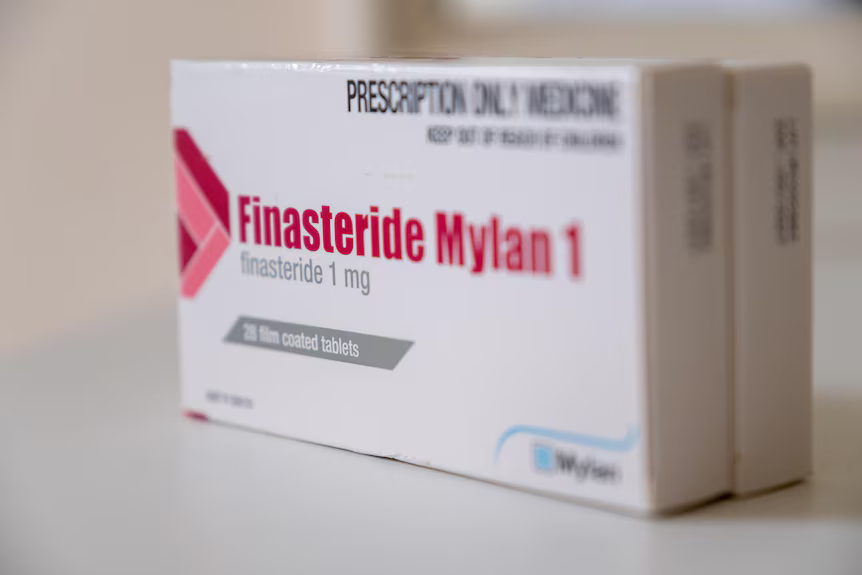How Safe Is Finasteride? An Information Age Answer
How Verified Feedback Loops Can Finally Tell the Truth About Finasteride

How safe is Finasteride and is it effective in treating hairloss?
Every day, millions of young men around the world type the same question into search bars, Reddit threads, YouTube comments and telehealth chat boxes:
“How safe is finasteride?”
“Is it worth the risk?”
“Will it help… or could it ruin my life?”
These are not trivial questions. For many, hair loss is tied to identity, confidence, self-worth and social acceptance. In that vulnerable moment, a simple pill — finasteride — is presented as the gold-standard solution.
But as highlighted recently in the ABC Background Briefing investigation, the real-world consequences can be far more complicated. Some men report profound, even life-altering impacts.
The contradiction at the heart of the debate
Even the ABC report states:
“For the majority of users, finasteride is safe and effective, but a vocal minority say the drug can cause serious, long-term side effects.”
This line has been repeated for decades. But where does the “majority safe and effective” claim come from?
Almost entirely from clinical studies conducted over 20 years ago — trials that:
- involved small sample sizes,
- lasted short periods,
- and did not track long-term mental or sexual health outcomes with modern tools.
In contrast, current investigative journalism paints a far more unsettling real-world picture.
Examples from the ABC investigation
Young men described:
- sudden and severe sexual dysfunction,
- crippling anxiety and emotional numbness,
- depression so intense it felt like personality erasure,
- suicidal thoughts,
- and symptoms persisting long after stopping the drug.
One participant reported emotional blunting so severe that: “Even if someone told me I won the lottery, I wouldn’t feel anything.”
Another described searching for “the most painless ways to” self-harm.
These accounts don’t prove causation – but they raise an entirely fair question:
Where is the long-term, real-world evidence supporting the claim that finasteride is “safe for the majority”?
The honest answer: nowhere:
- No real-time outcome tracking.
- No independent, continuously updated evidence.
- No transparent user feedback system.
Just an outdated clinical picture repeated as if nothing has changed, despite the growing evidence to the contrary.
The Information Age demands a better answer.
Finasteride sits at the intersection of three accelerating forces:
- Appearance anxiety among young men
- Aggressive online advertising and telehealth prescribing
- A stagnant evidence base from the pre-digital era
Traditional research cannot keep pace with this environment:
- It cannot follow millions of users across decades.
- It cannot measure effects that fluctuate or persist long after use, and
- it cannot adapt quickly when new patterns of harm emerge.
But a modern feedback system can.
The PByT solution: Verified feedback loops
PByT (Powered by Trust) was designed to solve precisely this kind of information problem.
It replaces outdated, static evidence with continuous, real-world, user-driven feedback — allowing the public to finally see what is actually happening across thousands of cases, not just a handful of clinical participants from the 1990s.
Unlike traditional surveys or clinical trials, PByT is built around a hybrid integrity model:
- Votes are anonymous, so people can answer honestly and without fear.
- Comments and discussions are identified, ensuring real people stand behind what they say.
This combination — anonymous voting plus accountable discussion — produces a transparent, tamper-resistant and trustworthy feedback system.
It is uniquely positioned to answer the question:
How safe is finasteride today — in the real world?
Launching the world’s first open, ongoing finasteride study
PByT has now launched a permanent, evolving feedback loop dedicated to finasteride.
It draws directly on the lived experiences of users — not outdated assumptions, and not unverified online anecdotes.
As more people participate, patterns will emerge. Risks and benefits will become clearer.
And for the first time, the public will have access to an honest, data-driven picture of Finasteride’s long-term profile.
Whether Finasteride turns out to be mostly safe, moderately risky, or significantly dangerous is not for institutions to guess — it is for evidence to show.
Why this matters internationally
Finasteride is prescribed globally. Telehealth platforms push it aggressively in the UK, US, Europe and Australia. And the same evidence gaps exist everywhere.
This makes finasteride a test case for a new model of public-interest science:
- open instead of closed,
- continuous instead of static,
- citizen-led instead of industry-defined.
It is time to move beyond outdated studies and fragmented anecdotes — and towards a living, transparent, global evidence base.
Action: Contribute to the Finasteride Feedback Loop
You can help create the most definitive, ongoing study of finasteride ever undertaken.
PByT’s system ensures both honesty and integrity:
- Your votes remain anonymous, so you can respond freely.
- Your identity is shown only if you choose to comment or join the discussion, ensuring accountability and credibility.
This hybrid model transforms personal feedback into a trustworthy public resource.
→ Take part here: PByT: Finasteride Feedback Questions
Your participation contributes directly to a real-time, continuously improving evidence base — one that grows stronger as more people join.

